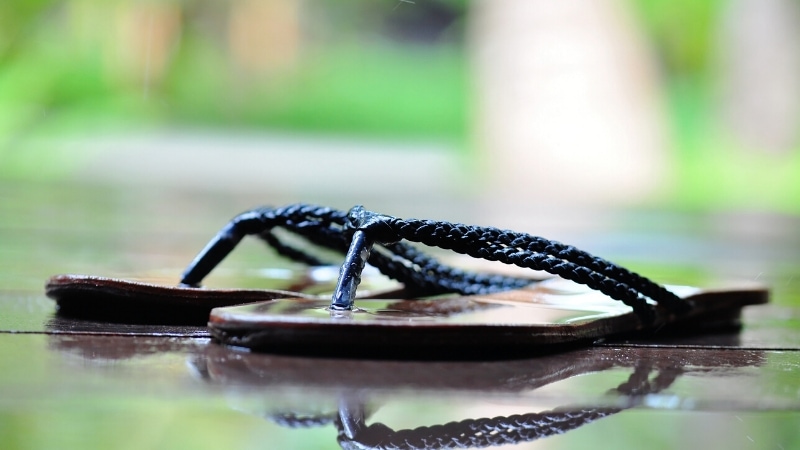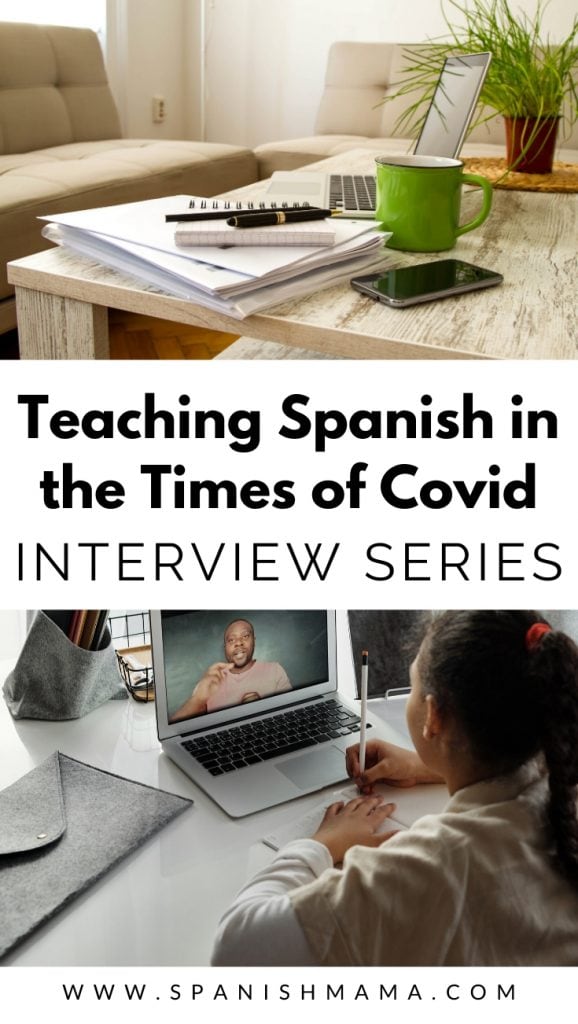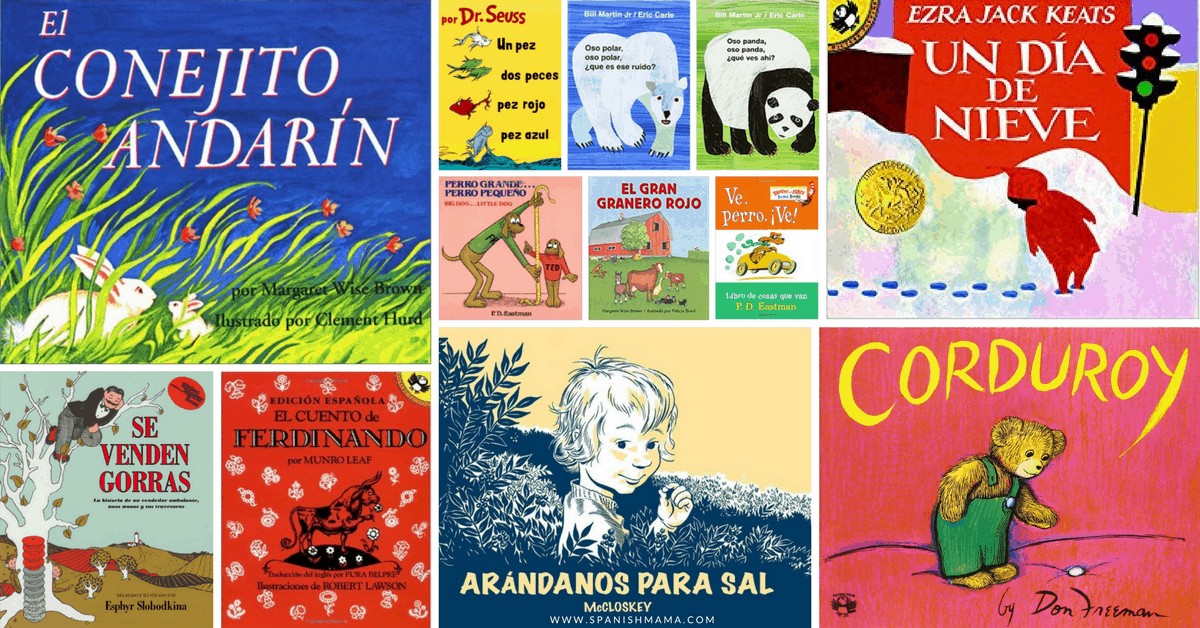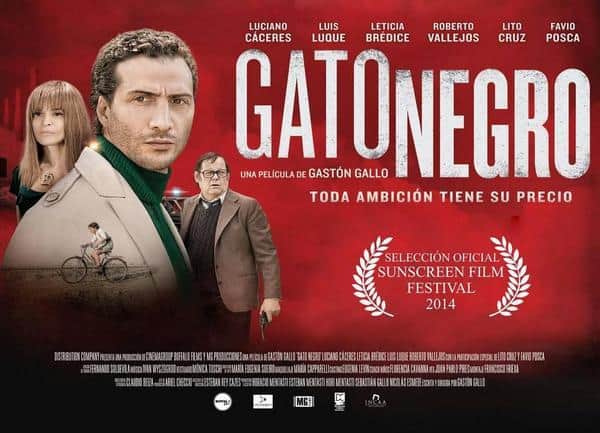Teaching in the Time of Covid: 5 Spanish Teachers Share (Part 1)
Inside: Spanish teachers share their experiences of teaching in 2020 during Covid-19.
We already knew that teachers are incredible people, right? And yet the upheaval of almost-overnight shutdowns and quarantines in 2020 took everything to an unprecedented level.
As I’ve received emails and followed teacher groups, the tenacity and dedication of Spanish teachers all over is pretty amazing.
And still, I know teachers working from home had drastically different experiences. Some were caring for kids and family members. Some were already set up to move everything online, some weren’t, and expectations varied widely between districts.
I contacted my readers and teacher friends for series of interviews because I think many of us are still trying to process everything that happened. (And trying not to stress over uncertainty for the fall – yikes!) I enjoyed reading everyone’s responses and think you will too.
I keep thinking whatever happened academically, our students won’t forget how the adults around them responded to a worldwide crisis. When I read the answers below, the care of teachers is what sticks out to me. Whether or not our students seemed to pick up on that, I think it will stick with them too.
Let’s hear from our first five Spanish teachers!
MEET OUR SPANISH TEACHERS
Spanish Mama: Please introduce yourself and your teaching situation!
Erin: My name is (Profe) Erin Coleman and next year will be my ninth year teaching high school Spanish in Massachusetts. I am a new mom and teaching is my passion because I love making connections and helping others. If you’re ever looking for strategies to engage or connect with your students, you can visit my blog here.

Erin
Mary: I’m Mary Straub, and I teach grades 9-12, at a High School in Southeastern WI (30 min or so from Milwaukee). I taught Spanish 2,3, & 5 last year.
Marilyn: I’m Marilyn Alonso and I have been teaching for 11 years. I am a Spanish teacher at Holy Spirit Regional Catholic School in Huntsville, AL and teach Pre-K to 8th grade.
Shalina: ¡Hola! I am Señorita Spurlock (many of my students call me Spurly) and I just completed my 17th year teaching in the school district in which I grew up. I have been teaching middle school in northern Delaware for 5 years now, but have 12 years of experience prior in high school. I have taught students from kindergarten through 12th grade, plus adults in night school.

Shalina
Ellen: Hello, I’m Ellen Shrager, and I started teaching in New Hampshire using mimograph machines to make purple copies of handouts for students in 1986. I embraced photocopying machines, Wang word processors, computers, e-mail, online grading books, personal computers, smart phones and online teaching. I currently teach Spanish One full time in a suburban junior high outside of Philadelphia and blog at Minute by Minute Spanish.

Ellen
SHUTDOWN
Spanish Mama: What was it like when your schools shut down?
Erin: It was announced on the school email immediately after the final bell on Friday March 13th that we would be closed for two weeks. Students at first were excited for the “break” as they were walking out the door, but one student hung back with me and looked me in the eye. She said “…..This isn’t good, is it?” And I told her that I didn’t know. I’ll never forget the look on her face; I think she realized the severity of the situation before many of her peers. I was anxious from that moment because I had a feeling it might last longer. Sure enough, less than a week later schools were closed until April 6th and then shortly after that they were closed for the year.
Mary: Our admin did give us some notice, maybe a couple weeks before we actually were sent home we were told to start thinking about what we would do if we had to teach from home for 2 weeks. And then when it actually happened we were given a full day without kids (at home, because literally we were at school one day and home the next, it happened FAST here) to get actual plans in place. Thankfully our school just started 1:1 this year, so access to tech was handled, and admin made it clear they would be getting remote hotspots to students and staff who needed them. They were great about surveying and getting the info they needed right away.
Marilyn: There was not much warning. We were in school on Friday and on Monday we were told that we were going to remote teaching. Our school was not really prepared for teaching remotely, but we managed to do it. All the teachers had to learn new ways of teaching and students too. It was wonderful to see how we all united and helped each other.
Shalina: After the first in-state case was announced, personal judgment informed many of us that we would be closing down, so I verbally walked through what that might look like with my students and prepared myself a little for exclusion from the building. Our administration put the “shelter at home” order in place after school hours on March 13. We were given very little direction (understandable when given the unusual circumstances) when we first shut down, so unless one were a self-starter without district approval, our students had a two week break.
Ellen: During those first days in March, we heard of cases on the west coast but it seemed abstract and remote to us. On Monday, March 9, 2020 we were told in addition to teaching, we needed to prepare a packet with two weeks of work to hand out the following week, if needed. It had to be on paper as our school is not yet 1:1 and it would be unfair to assign work that some students couldn’t do.
By Monday lunch time, we were aware that Boston, New York, New Jersey were reporting cases and we started to hear of cases in our community. Staff members were hearing on their cell phones of relatives and friends coming down with the virus. By Tuesday we were told to have the packet ready for distribution for Wednesday.
Wednesday evening I was supposed to present to 350+ parents of incoming sixth graders. My presentation is usually standing room only. I couldn’t believe that I and the two principals would be alone in the packed auditorium. Finally at 2:00 pm it was cancelled. Twenty four hours later, the governor announced he was closing all schools in our hotspot county for the next two weeks. Parents started to text their children and they told us, the teachers. Our principals announced it at the end of the day, at 3:00 p.m. Most people left the building quickly but I pulled my car up and carried out my plants, text, props for upcoming lessons, and all food items. I was one of the last to leave.
On my way home, I stopped at a small grocery store and the line snaked around three aisles for check-out. The shelves were picked clean.
The following day, Friday, March 13th, the governor closed all schools in the state. One of our high school teachers collapsed and was our first known staff member with the virus. Her story made the front page of the largest newspaper in our area, The Philadelphia Inquirer.
REMOTE TEACHING
Spanish Mama: What did remote teaching look like for you?
Erin: I was very impressed that my school focused on student safety first. Making sure students were fed and safe was at the top of the list, before any lesson plans were put in place. After two weeks in a sort of limbo, we were told we could provide review material to our students. After two weeks of that, we were allowed to introduce new material, slowly. It was decided that students would be graded on the first 3 terms of the year, and any work done during distance learning could add to their grade. (Many students earned 3 extra points on their final grade for their hard work!)
We were expected to host synchronous and asynchronous activities, while our live meetings were to focus on social-emotional learning rather than content. We were also required to provide 3 videos per week per class level. (For me, that was the hardest part.) I liked this overall policy for this year, but I’m nervous to see what could change in the fall if we aren’t back in our classrooms with our students. I think it will be challenging to motivate students that we haven’t met face to face. It will be our job to find ways to establish relationships with them, so that they trust us and are motivated to learn from us. (We can do this!)
Mary: We traditionally have an 8 period day, same classes ever day. Admin set up a good schedule to allow for plenty of work time and not too much for kids, but similar structure so it still “felt” like school. 7:00 – 9:25 was teacher prep time, then from 9:30-2:35 we had 30 min class periods with a 40 min lunch and 5 minute “passing” times, then until 3:00 was ” office hours” where we just had to be reachable by the kids. THIS SCHEDULE SAVED MY SANITY. My own sons had NOTHING like this and my husband commented multiple times how much better my schedule was and how he wished our kids had it. They were left to sink or swim on their own.
We were told to use Google Meet or Zoom or something similar for live meetings, but we were also given the freedom to do what we needed. We were allowed to teach from home or come into the building (following some guidelines). Most teachers stayed home, but a few worked from their rooms. We had just enough structure and support and plenty of professional freedom to make the best decisions for ourselves, our students and our curriculum. Also, we got great support from admin to follow up with kids who were maybe not attending class or not turning in work (they met weekly about these kids, and followed up!). We also had our own choice for how to adapt grading, whether we wanted to give a final exam or just wrap up with a final project. But they did end up combining quarter 3 and 4 into just one semester grade.
The whole time I felt I had just enough support and plenty of the freedom I needed. Also, the admin sent our surveys and listened to the results. Parents, staff and students all indicated that 5 days per week was too much, so part way through they changed Wednesdays to a staff work day, no school for kids. So we ended up school Monday -Tuesday, a day off (for kids), Thursday – Friday school and then the weekend off. Which ended up being a good balance.
Marilyn: At the beginning, chaotic, but once we got the hang of it, it was fine. We didn’t have many guidelines we had to follow.
Shalina: Thankfully, we moved to an online platform several years ago and we are a 1:1 Chromebook-based district (grades 6-12.) This made things a lot easier because we (at the middle school level) were not forced to transition to something we didn’t know at all. I am not the biggest fan of computer-based learning though, so adapting some of my activities was rather difficult. We were encouraged to use Zoom and Nearpod amongst other tech apps to make learning fun and engaging, but were not forced to deliver live instruction.
The district distributed plans to core teachers with learning packets delivered (with food assistance) to students who lacked consistent internet access. Teachers of Unified Arts/Career & Technical Education courses were left to their own plans and delivery, but encouraged to support the core subjects. We followed a “no harm” policy that said that work assigned during remote learning could not decrease students’ grades and we operated within a prolonged 3rd quarter (never moved into a 4th marking period.)
Ellen: After two weeks of the paper packets, we needed to create asynchronous lessons online equalling two hours a week of work. I made a lesson each day that would take 24 minutes to complete.
The weekly lessons all had to be posted in our Google Classroom™ by 9:00 am on Monday with a letter to the parents sent via our grading program. However the lessons were not due until Friday at 3:00 p.m.
This meant fifteen hours of grading on the weekend as it all had to be corrected by Monday at 3:00 pm when attendance was due. Students not turning in work were marked absent for the week.
However, students turning in work late were marked present as long as one lesson was turned in by Monday at 3:00 pm. Students could also make up any work missed from any day of the school year, adding to the grading burden.
We also had office hours twice a week for an hour. Few students took advantage of them as they would just e-mail me for a faster answer, rather than wait for the assigned day and time.
For me and my colleagues, Tuesday became our new Sunday, the one day of the week we wouldn’t work.
There were endless online meetings for IEPs, for department information and for training. We avoided scheduling them on Tuesdays.

BEING A REMOTE TEACHER
Spanish Mama: What was it like for YOU, on a personal/emotional level?
Erin: I struggled a lot for the first month. To be honest I considered taking a leave of absence. I felt like I had been thrown into cold water, teaching from home with a 5 month old in my lap. I was struggling to record the 3 required videos per class level (so 6-9 for me) for my students during naptime, or with a crying baby in the background and trying to hide the noise. I had a very hard time balancing. It felt like there was no “winning.” Luckily, being very honest with my department head and coworkers reminded me that I was surrounded by people that wanted to lift me up, and to support me. We have always been a collaborative department, but it was so easy to feel isolated when we were apart. After that initial shock, my coworkers and I started working together to share videos and other helpful tools. That made a world of difference for me.
Mary: That schedule saved my sanity. Having a regular, predictable routine in the middle of my entire life turned inside out was a life saver. I have a bit of anxiety (I am learning) and it went into overdrive. But I also learned early on that our brains crave the familiar, so the trick was to create a routine that soon FELT familiar, and so I tried to do that with my students too. I wanted them to have the familiarity of a routine, with some structure but also some freedom.
It was VERY difficult for me to be home with my two sons, trying to be there for them but also “at work.” But I had the freedom to work that out for myself, and I did. My oldest has ADHD and having basically NO schedule or structure was one of the hardest things for him. If he had had a schedule like our school he would have been far more successful. I also wanted my own students to see my face and hear my voice regularly, because that helps with it feeling like “class.” My own son said more than once that he knew he was technically still in school but because he was home his brain was telling him it was vacation. I did not want that for my students, so I tried to alleviate that without being overly burdensome.
My students often said that I was “the only” class they had to show up for live on a regular basis. (I even made them sign in for attendance on a google form DURING actual class time.) Again, structure and regularity so they could feel some sort of familiarity. For me this helped MY mindset still feel like I was giving my best to my students. On the other hand I did not like spending so much time NOT interacting with them face to face. I felt like I was doing a lot of grading and very little actual teaching. Like I was assigning more and doing minimal actual instruction. However, this is what ended up working out the best for the students – keeping things easy enough they would actually do the work, while still introducing some new material. I felt like since we didn’t have time to make a full 3-month plan (because no one know how long it would end up actually taking) that I did okay with the kids, but I wanted to do better. I feel like we survived, but didn’t thrive in the ways I know now that we could have. BUT – overall I felt like I did do the best I could. It was tough and less than ideal and I struggled mentally a lot. But having my work to do and the schedule to follow absolutely helped SO much!
Shalina: Remote teaching for me was uncomfortable. I am a fairly energetic teacher who circulates around the room a lot, so being tethered to a screen was tough. Interactions between teacher and student were stunted (a lot of my students treat me like their second mom usually.) I felt like I wasn’t offering enough to my students at the same time that I didn’t want to overwhelm them with information that I was not clarifying at a moment’s notice. When students “hung out” at the end of a live check-in to ask questions, it felt a little like normal.
Marilyn: When the lock down began it was overwhelming and very stressful. I was not enjoying my job.
Ellen: It was challenging to spend over 50 hours a week on a screen.
It was overwhelming to go from ground zero to fully functioning using Google.
It was satisfyingly creative to design lessons that could introduce new vocabulary to Spanish One students and give them enough listening and reading activities to help them absorb the material.
But it wasn’t lonely. While I sorely missed all of the interactions with former students in the halls and my students in my classes, I actually kept in contact with most of my students. I committed to tracking down every student who didn’t submit work, leaving no student unnoticed. Their stories were heart-breaking.
One student was downstairs with his brother and dad and Mom was upstairs with the virus.
The parents of one student both had the virus.
Another student had to fill in for her grandmother, babysitting her cousins, because her grandmother was in the hospital with the virus.
Another student had both grandparents in the hospital.
I spoke to everyone until I knew why they weren’t submitting work, helping those that I could. Those phone calls were the turning point for some students to start submitting. I didn’t block my cell phone, parents and students called me and some texted me. I answered most emails with phone calls and some days I had 30 emails from students. I spoke with students all day long, and if necessary in the evenings. Sometimes I would call to answer a question and end up on the phone with a single parent, hearing his or her story of the struggle to juggle working and parenting.
I was able to do this as we don’t have children and it was something I could do, knowing that other teachers were busy with their own children at home. When I first started teaching, two students called me during a snowstorm, apologizing for calling me at home but my number was listed in the phone directory. They wanted to know if they had to do the next day’s work on my weekly sheet if school was closed and I hadn’t taught the material. They are now in their mid-forties. No student has ever called me since, until this COVID-19.
WHAT WENT WELL
Spanish Mama:What did you feel like went well?
Erin: In addition to enhanced collaboration with my colleagues, eventually I found ways to streamline different processes that were taking the most time. I set specific days for comments on work submitted, contacting parents, offering extra help to students, etc. Instead of providing feedback on every single assignment each student submitted (which meant I was attempting 5 assignments weekly for 100+ kids = 500 comments…), I announced to them that I would provide feedback A) any time they requested it throughout the week or B) when they submitted ALL of their assignments for the week. This put the ball in their court but ensured that students who wanted feedback got feedback in a timely manner. This is just one example that made a BIG difference for me. I also got better at using Google Sheets (*please* see my TPT for the free written and video tutorial, it changed my life), and learned how to use Screencastify. I also got better at asking my husband for help during the times I needed to have live meetings or record a video. It was hard for him, too, as while working from home he needs to be *at his computer* from 9-5. But we got better at the balancing act. Focusing on the extra time with our son really helped us to change our mindset. We were safe, home, and healthy, and we were with him. This was time with our son that we can never put a price on.
Mary: By the end I was doing one live activity per week, with the rest me available as they worked (they always had a zoom link to pop in and ask questions and they did use that). This ended up being the best balance for my students. I also have a great team of Spanish teachers and we met regularly to do planning. I loved that kids already were using google classroom all the time and so the transition to virtual learning in that respect was seamless. My own son did not have this experience and his teachers all used widely varying platforms, including some just emailing, and it made it VERY hard for him to organize and find everything he needed.
Teacher organization and SIMPLICITY (organization and directions!) ended up being KEY. Since we already had a lot of technology tools in place, the kids had little adjustment in that regard. I also liked using some more online tools that I had not fully used before and ended up requesting them in my budget for this coming year. So I learned some new things, too. The kids were so good and tried so hard; I really admire their persistence and attitudes during all of this! I sent out a survey at the end of the year and got such lovely, positive comments from the kids about how it went. So although I feel there are things I should/could have done better, the kids felt it was just right and were appreciative.
Shalina: I asked for student input via google form prior to the official start of remote learning and later, through Zoom to discover what they wanted from me. I feel like that was a good approach and I can base any remote learning for next year on this semester’s successes. I also surveyed students at the end of the course to get some constructive criticism and to inquire about what was positive for them.
I assigned a daily vocal response question (our online platform has an audio/video recording feature) related to our topic and audibly modeled how to answer the question appropriately using pictures. They received feedback from me about pronunciation/accent, grammar points, and comprehensibility. I also assigned weekly duolingo and longer (3 week) structured cooperative projects.
Marilyn: All the knowledge I acquired helped me to become more prepared.
Ellen: The content and delivery of my lessons. Each day the students would open their Google™Slides and listen to the 20+ mini videos I created and interact with the material. The last two minutes they filled out a Google™ form letting me know how long it took, questions and feedback. I would start monitoring the forms and the early-bird students would let me know if there was a mistake or if they didn’t understand something so that I could fix it for the other students.
CHALLENGES IN REMOTE TEACHING
Spanish Mama: What was the biggest challenge for you?
Erin: Balancing working a full time job from home as a new mom. Recording the required amount of videos was daunting, as was contacting the parents of all MIA students every week. Motivating students got more difficult each week. By the end of the year, my participation had started to dwindle. It was disheartening to be working so hard and to feel so at a loss. I also truly missed my students. I am still struggling with the sadness that I didn’t get to say goodbye to my seniors. I am sad for all that they missed this spring.
Mary: Speaking went almost entirely by the wayside. We tried flipgrid, but it became apparent they were just reading something they prepared ahead of time. The 5’s (all seniors) were better about this, but even they fell back on what was easier. I have to re-think how I approach this for the fall, just in case. I felt like because the time at home kept being extended and we didn’t know from the outset how long we’d be at home that we (my Spanish team and I) ended up just focusing on one or two new, simple concepts to learn (mostly grammar) and lots of input so they would at least maintain their understanding.
Also, my senior class was tough. They lost EVERYTHING fun about the end of their high school career. So I scrapped the last unit I had been planning on and talked with them about this. I chose to let them brainstorm topics THEY thought would be fun, and we learned about those things instead. We still did our end of year scrapbook, but dramatically modified. Usually it ends up being a 10-15 min presentation by each students where they talk about their entire school careers, and they LOVE it. I did not have high hopes this year since it was basically a digital project with no presentation. But I ran into a student in the store and she said that she loved that project and it was “actually pretty fun” and thanked me for doing it. So you never know!
Shalina: One of the biggest challenges is feeling helpless, both for me and the students. Contacting families who were non-responsive or aggravated by the schooling-at-home situation took my spirits down a few notches. I also tried convincing students they don’t need an online translator when I’m not there to enforce using their brains. Many only had internet-based resources to use (they left their interactive notebooks at school,) so they had nowhere else to turn.
Marilyn: The parents’ frustration and not being able to help them.
Ellen: While I had previously used Google Classroom™ I was slow to figure out how to efficiently grade and leave comments.
While I know many teachers who just checked for completion of the feedback form, I graded everything. Students turning in blank slides quickly learned I would give them no credit for just turning in blank slides. It paid off as most of my students kept doing work up through June.
I know that it will never be this hard again and the key to grading Google Slides™ is to create scoring guides so that I can just check a box and the scores will automatically be added up and scored.

SUMMER VACATION
Spanish Mama: How are you spending your summer?
Erin: Honestly – not thinking about the fall! Not yet. Spending time with my son, my husband, and our dog. Hopefully, spending more time with our families when it is safe. I like to read, run, practice yoga, and I love video games. I’ve been playing animal crossing during nap time recently 🙂
Mary: With my boys at home. We will be visiting lots of state parks and finding non-crowded places to swim. And we will be camping on our family property in Iowa. My husband still has to work so we will stick close to home. The challenge will be finding fun ways to keep them active and having fun while staying safe!
Shalina: I am working on a lot of projects around my physical home (fencing, rearranging and refinishing furniture, working in the garden, etc.) I am also scheduled for webinars (most tech or world-language based) almost every day through the end of this month. I’m already analyzing previous lesson plans to see how I can deliver the content using more technology and less shared materials.
Marilyn: Continue learning more about remote learning, so I can be ready for the Fall.
Ellen: I have made a commitment to minimize ‘screen’ time to an hour a day, including social media and work, for six weeks. For the first time in 30+ years I feel burnt out by the workload and need to recharge. We won’t know until August what our new normal will be and I choose to hit the ground running when the plans are final.
FALL
Spanish Mama: Most teachers are facing major uncertainty, looking towards fall. Does your school have a plan in place yet?
Erin: Not yet. To be honest, my state just released guidelines and they are a bit underwhelming. They refused to put a limit on class size, and suggested “6 feet when possible but 3 is ok” for distancing. I feel this is the state washing their hands of the issues we are facing. I want to be back with my students, but I am fearful for their health and for my own.
Mary: Not yet, WI just put out recommendations by the DPI this Monday (today is Wednesday, June 24 as I type this) so I imagine the admin teams are BUSY. It is an 83 page document!! However, they have done a remarkable job keeping everyone’s safety in mind AND listening to what everyone needs – students, staff. parents, community, etc. They are being realistic while still maintaining needed structure, so I have confidence they will make wise decisions that benefit everyone the best they can. I am grateful to work where I do!
Shalina: Things are going to be rocky this fall. I know that my district is working on several plans and will be instituting the one that makes most sense for the most students based on the pandemic at that time. I hope to be back in the classroom, but I am preparing myself for a hybrid situation.
Marilyn: Not yet, working on it, but I am ready for whatever comes my way in the Fall.
Ellen: We are still in the planning phase.
ADVICE FOR FELLOW TEACHERS
Spanish Mama: Do you have any advice or thoughts for your fellow teachers?
Erin: Focus on what you can control, and try to put the rest out of your mind. Please don’t spend your summer planning for something that will undoubtedly change tomorrow. Also; please give yourself permission to never work for free. I love my job and I adore my school and admin (I am very vocal about this haha). I do think it is a widespread trend, however, that our schools often expect us to adapt our curriculums over the summer. They tell you at the very end of the year that you’ll be teaching a new course next year, or they ask for help adjusting the curriculum map for a course you’ve taught for years. Very often, they ask this of you unpaid because they figure you “have the time.” They also know that we tend to say “yes.” Please give yourself permission to say no. Give yourself permission all year round, but especially during your summer.
Will I make sure I am ready to start the year? Absolutely. But will I spend every day at my computer, adjusting activities when I don’t know what the future holds? No. Future Erin will be ready to handle the challenges that are coming. But present day Erin needs to take a step back and focus on time with family. If you know me, you know that I am a very organized person and a very hard worker. But I am also very passionate that teachers already work too much, and deserve a break now more than ever. We need to rest and recharge so that we can be ready for next year, and meet it with grace and enthusiasm. We can do this.
Mary: CREATIVITY IS OUR SUPERPOWER.We teach KIDS not subjects. We KNOW kids. We KNOW what works, what is best, how to help, what to do. So with that as a strong foundation, we can tap into unprecedented creativity, COLLECTIVELY, and help everyone not just survive but THRIVE. But one major key is not to work alone! Find a group, even if its all online, where you can get support and resources and ideas and don’ t be afraid to TRY STUFF. In fact, trying stuff for the first time right with the kids is sometimes a great way to interact with them – THEY can also help US.
This next fall is going to be completely new for us all, not just in terms of actual schedule, etc., but in terms of what we teach. We are going to HAVE to see where the kids are and work from there. Which means re-thinking approaches and materials and methods, and maybe even the whole year’s curriculum. (I do not expect my students to be proficient in the imperfect, for example. They were exposed to it and practiced it a little, but it is not part of their proficiency yet. This means Spanish 3 will be dramatically different. ) And SO WHAT. I do not care ONE little bit. Whether this is a stumbling block or a stepping stone depends entirely on how we think about it. WE CAN DO HARD THINGS. And we will. Because being a teacher IS a superpower. We are amazing. We can do this and do it WELL. I cannot WAIT to see what happens from here!! What if this is a CHANCE, not an impediment??
Shalina: Be careful with yourself. Stay healthy and safe. You are human. Don’t be afraid to ask for help when you need it. You make mistakes. Learn from them and keep moving forward. You’re not perfect. Grant yourself some grace and extend it towards everyone in your life. We’re all in this together.
Marilyn: Be prepared to be hybrid or remote learning at the beginning of the Fall. I am preparing lessons for remote learning just in case that’s what we end up doing in the Fall. I don’t like the idea, but it’s all about the mindset we have. Attitude is everything, so be ready for whatever it’s thrown at you for the Fall.
Ellen: Learn how to grade efficiently on Google Classroom™ or whatever platform you use.
Require daily feedback on their length of time for completion and questions and comments.
If you are asynchronous, make a quick video responding to their questions and comments.
Create lessons so that students have to move pieces, analyze pictures, and then reveal the answers. Many students find it satisfying. More than one parent confided that their students saved my lesson for the end of their study time as it was the most fun – parents could see their heads bobbing to the music, and students speaking out loud when a revealed answer would surprise them.
MIL GRACIAS to the wonderful teachers who contributed to this post!
We already have a part two lined up, with part three possibly coming as well.
I would love to feature you in this series! Email me at [email protected] for more information – put “Spanish Teacher Interviews” in the subject line to help me find you!







